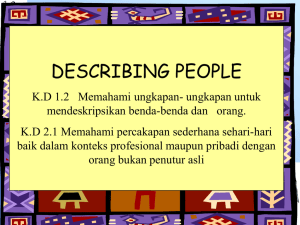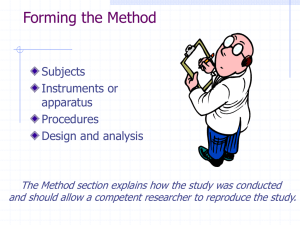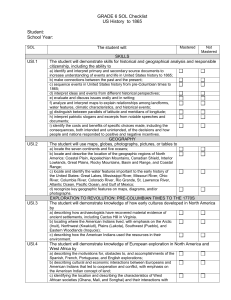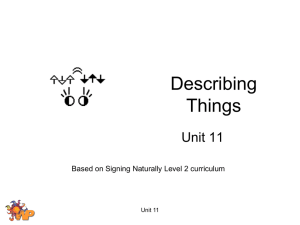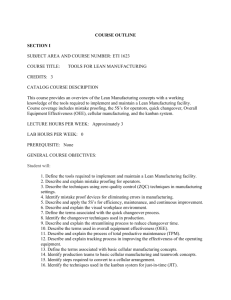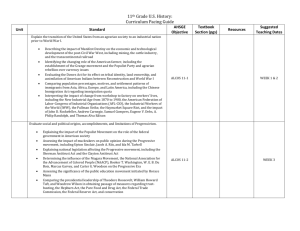Syllabus: US History to 1865 Mrs. Fox
advertisement
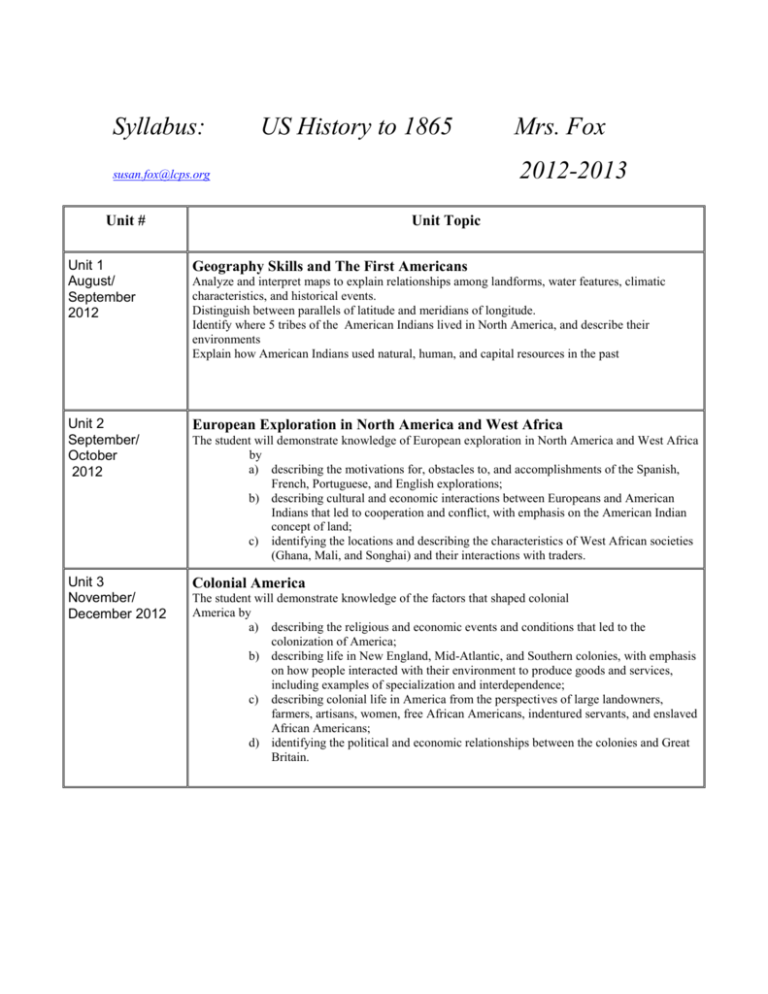
Syllabus: US History to 1865 2012-2013 susan.fox@lcps.org Unit # Mrs. Fox Unit Topic Unit 1 August/ September 2012 Geography Skills and The First Americans Unit 2 September/ October 2012 European Exploration in North America and West Africa Unit 3 November/ December 2012 Colonial America Analyze and interpret maps to explain relationships among landforms, water features, climatic characteristics, and historical events. Distinguish between parallels of latitude and meridians of longitude. Identify where 5 tribes of the American Indians lived in North America, and describe their environments Explain how American Indians used natural, human, and capital resources in the past The student will demonstrate knowledge of European exploration in North America and West Africa by a) describing the motivations for, obstacles to, and accomplishments of the Spanish, French, Portuguese, and English explorations; b) describing cultural and economic interactions between Europeans and American Indians that led to cooperation and conflict, with emphasis on the American Indian concept of land; c) identifying the locations and describing the characteristics of West African societies (Ghana, Mali, and Songhai) and their interactions with traders. The student will demonstrate knowledge of the factors that shaped colonial America by a) describing the religious and economic events and conditions that led to the colonization of America; b) describing life in New England, Mid-Atlantic, and Southern colonies, with emphasis on how people interacted with their environment to produce goods and services, including examples of specialization and interdependence; c) describing colonial life in America from the perspectives of large landowners, farmers, artisans, women, free African Americans, indentured servants, and enslaved African Americans; d) identifying the political and economic relationships between the colonies and Great Britain. Unit 4 December/ January 2012-1013 American Revolution Unit 5 February 2013 Birth of the Nation Unit 6 March 2013 Westward Expansion and Reform Unit 7 March/April 2013 Civil War May/June 2013 Review and Complete SOL Test Overview of U.S. History II The student will demonstrate knowledge of the causes and results of the American Revolution by a) identifying the issues of dissatisfaction that led to the American Revolution; b) identifying how political ideas shaped the revolutionary movement in America and led to the Declaration of Independence; c) describing key events and the roles of key individuals in the American Revolution, with emphasis on George Washington, Benjamin Franklin, Thomas Jefferson, and Patrick Henry; d) explaining reasons why the colonies were able to defeat Great Britain. The student will demonstrate knowledge of the challenges faced by the new nation by a) identifying the weaknesses of the government established by the Articles of Confederation; b) describing the historical development of the Constitution of the United States; c) describing the major accomplishments of the first five presidents of the United States. The student will demonstrate knowledge of westward expansion and reform in America from 1801 to 1861 by a) describing territorial expansion and how it affected the political map of the United States, with emphasis on the Louisiana Purchase, the Lewis and Clark expedition, and the acquisitions of Florida, Texas, Oregon, and California; b) identifying the geographic and economic factors that influenced the westward movement of settlers; c) describing the impact of inventions, including the cotton gin, the reaper, the steamboat, and the steam locomotive, on life in America. The student will demonstrate knowledge of the causes, major events, and effects of the Civil War by a) describing the cultural, economic, and constitutional issues that divided the nation; b) explaining how the issues of states’ rights and slavery increased sectional tensions; c) identifying on a map the states that seceded from the Union and those that remained in the Union; d) describing the roles of Abraham Lincoln, Jefferson Davis, Ulysses S. Grant, Robert E. Lee, Thomas “Stonewall” Jackson, and Frederick Douglass in events leading to and during the war; e) using maps to explain critical developments in the war, including major battles; f) describing the effects of war from the perspectives of Union and Confederate soldiers (including African American soldiers), women, and enslaved African Americans.

